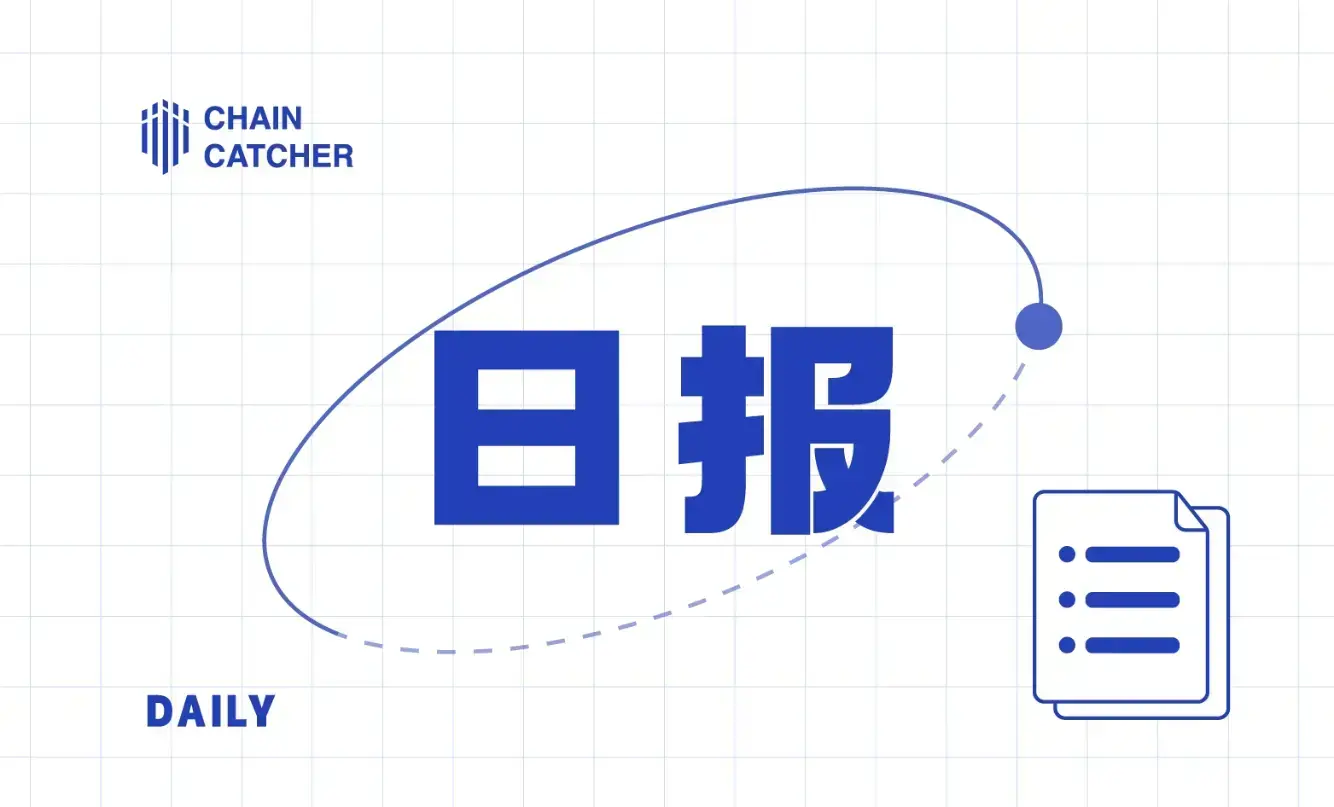2024 Q1 Biggest Winner: The Logic Behind the Surge of Meme Coins
Written by: Lingyun, Miss Cat
Reviewed by: Ashley
Value investing is a waste, while memes can make you a king overnight. Today, AU Research will interpret the economic principles behind the meme explosion and how to filter reliable targets.
01 What is a Meme
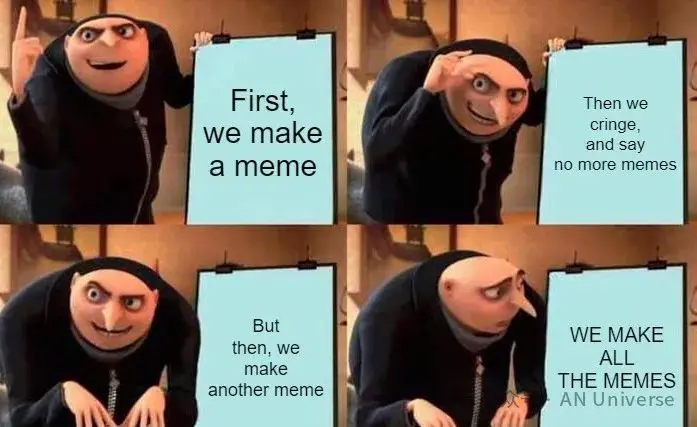
The term "meme" was first proposed by British scholar Richard Dawkins in his book "The Selfish Gene." He believed that, just like genes in biology, culture also has a basic unit that carries information for cultural transmission.
The term "meme" is also translated as "模因" or "谜母," originating from the Greek word "mimema," meaning "that which is imitated." Biologist Richard Dawkins first mentioned it in his 1976 book "The Selfish Gene," simplifying it into a term similar in sound to "gene." He applied the concept of "evolution" to the study of "cultural change," formally defining a meme as a small cultural unit that spreads through continuous replication and imitation among people, similar to genes. Chinese scholars He Ziran and He Xuelin translated "memes" as "模因" in 2003.
Richard Dawkins compared the process of cultural transmission to the evolutionary rules in biology. Memes encompass a wide range of elements, including religion, rumors, news, knowledge, ideas, habits, customs, and even slogans, proverbs, phrases, words, and jokes.
The replication of memes is not as precise as the replication of genes in nature; it is not merely a process of imitation but also a process of autonomous recreation, following the principle of survival of the fittest.
Just as genes jump from one person to another in the gene pool, memes jump from one person's mind to another's through imitation, thus completing their reproduction. When a meme occupies a person's mind, it is like a virus infecting a cell, turning the mind into a tool for carrying the meme. Just as not all genes can successfully reproduce, some memes have a wide impact, while others quickly disappear.
02 How are Memes Spread
Dawkins summarized three key factors that affect the survival ability of memes: longevity, reproductive power, and fidelity of replication.
Compared to the other two factors, longevity seems less important because the survival of a meme largely depends on the longevity of its carrier. When the brain that carries the meme dies, or when the "CD" that carries the information is destroyed, the meme disappears.
Reproductive power is relatively more important. If a meme is a scientific discovery, its chances of survival largely depend on how many people can understand this discovery. This can be roughly estimated by calculating how many times it is cited in well-known academic journals and the sales of those journals. The stronger a meme's reproductive ability, the more widely it can spread, increasing its chances of survival.
Fidelity of replication refers to whether a meme can be completely preserved when it is copied and spread. Due to differences in the educational background, interests, age, and gender of the replicators and recipients, the copied and accepted memes may differ. In some cases, the replicator may consciously alter the meme while spreading it. A typical example is when, in academic papers, authors only select certain aspects of a meme to illustrate their point or analyze it from a new perspective, or combine it with other memes to form a new meme. High fidelity of replication allows the meme to be preserved intact.
03 What Makes Memes Go Viral?
In simple terms, it relies on "the laws of communication," which enable rapid dissemination. Therefore, studying memes requires first studying the laws of communication, market sentiment, and understanding "how to stimulate people's emotions." This inevitably brings up the SIR model of transmission.
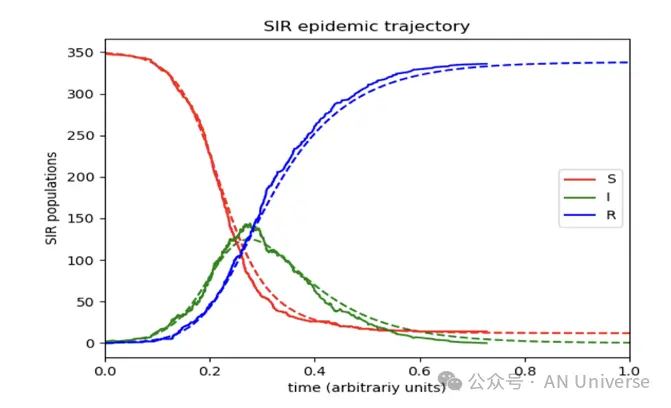
Originally a model for the spread of epidemics, it is also applicable to information dissemination. The red line represents susceptible individuals, the green line represents infected individuals, and the blue line represents recovered individuals, while the horizontal axis represents time.
The core of information dissemination is to ensure that the speed of infection exceeds the speed of recovery, so that the number of infected individuals continues to expand. From the perspective of information dissemination and psychology, this means that the more new people are exposed to the information, the more opportunities there are to infect others.
Next, combining psychology and communication studies, we will analyze the rules of meme distribution from four core elements: MEME content, environmental atmosphere, KOL promotion, and wealth creation effect.
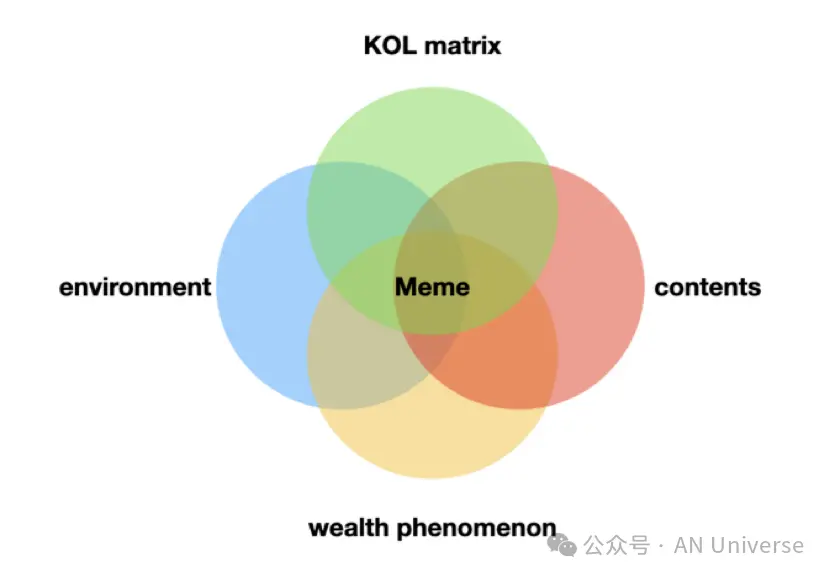
Core Content: The essence of a meme is to tell a story through images and convey emotions through pictures. For example, $Doge is appealing to dog lovers and has a strong long-tail effect, as many people are attracted to cute and interesting puppies, growing fonder the more they see. The sad frog $PEPE was a beloved meme before it became popular. Sloths are also very popular in Zootopia.
In terms of emotional transmission, the more straightforward and simple, the better. There is a saying about "The Three-Body Problem": for every formula added, ten thousand viewers are lost. This illustrates that the more down-to-earth, the easier it is to spread; excessive professionalism can only attract peers.
In summary, cute, traditionally liked by the world, simple and straightforward memes are more likely to go viral.
Environmental Factors: This environment includes the macro environment and economic cycles. This bull market has brought a large number of outsiders into the industry. Initially, they find complex technologies like oracles, re-staking for security measures, and smart contracts hard to understand. However, memes are something they can grasp, and they are priced very cheaply; for 10 USD, you can buy thousands, and if it gains a zero, that’s a tenfold increase. Many low-quality coins can gain multiple zeros in just an hour, making them easy to handle.
The recent bull market's meme explosion has also been influenced by the downturn in the traditional economic cycle. Simply put, there is a consumption downgrade in the crypto space. Except for the United States, most countries have experienced economic sluggishness in the past two years. In this context, the public's desire to explore new technologies diminishes, akin to animals hibernating, living in a low-energy, easily absorbable manner. Under these circumstances, the meme market will be even more vibrant.
KOL Promotion: The creation, distribution, pool building, and KOL promotion of a meme are essential steps. Regardless of their own level, you will find that what KOLs write and say is very provocative, making people willing to believe. Many prices in the crypto space come from bubbles, and bubbles arise from consensus. Therefore, meme marketing inevitably involves KOL promotion and community dissemination.
At this point, a risk reminder: you may see several community leaders shouting to invest in a certain coin, and you will be bombarded by public accounts, brainwashed into thinking a certain meme is particularly valuable. Once you jump in, you may find yourself either harvested by trading bots, or buying at the peak, or losing everything in ten minutes.
Following KOLs from English-speaking regions and different countries will help you assess the cultural value behind memes; cross-cultural consensus is true consensus.
Wealth Creation Effect: The reason memes have developed into a mainstream track is their effortless wealth creation myths and the FOMO (fear of missing out) panic that comes from missed opportunities. On one hand, they drive prices up to attract people, while on the other hand, they promote wealth creation myths, claiming that someone made 30 million USD in two hours, while also spreading FOMO fears within the community. This is a common marketing tactic for memes and aligns well with the laws of communication.
04 What are Meme Coins?
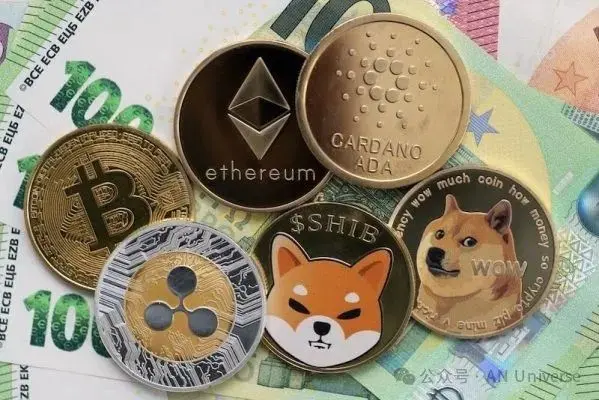
The reflection of meme culture in the crypto space undoubtedly includes various meme coins and meme NFTs. Meme coins, as a subclass of cryptocurrencies, focus on popular internet memes, cultural references, and viral internet trends. Notable examples of these memes include the Japanese Shiba Inu Kabosu and various versions of the Pepe the Frog cartoon, even extending to celebrities like Elon Musk.
According to a recent report from CoinGecko, the memecoin industry has become the most profitable sector so far this year.
The report shows that among the tokens with the highest market capitalization, memecoins have the highest average return rate of 1,312.6%. By the end of this quarter, memecoins launched in March have entered the top 10 list of meme coins by market capitalization, including Book of Meme (BOME), Brett, and Cat in a Dogs World (MEW), far surpassing RWA and AI sectors.
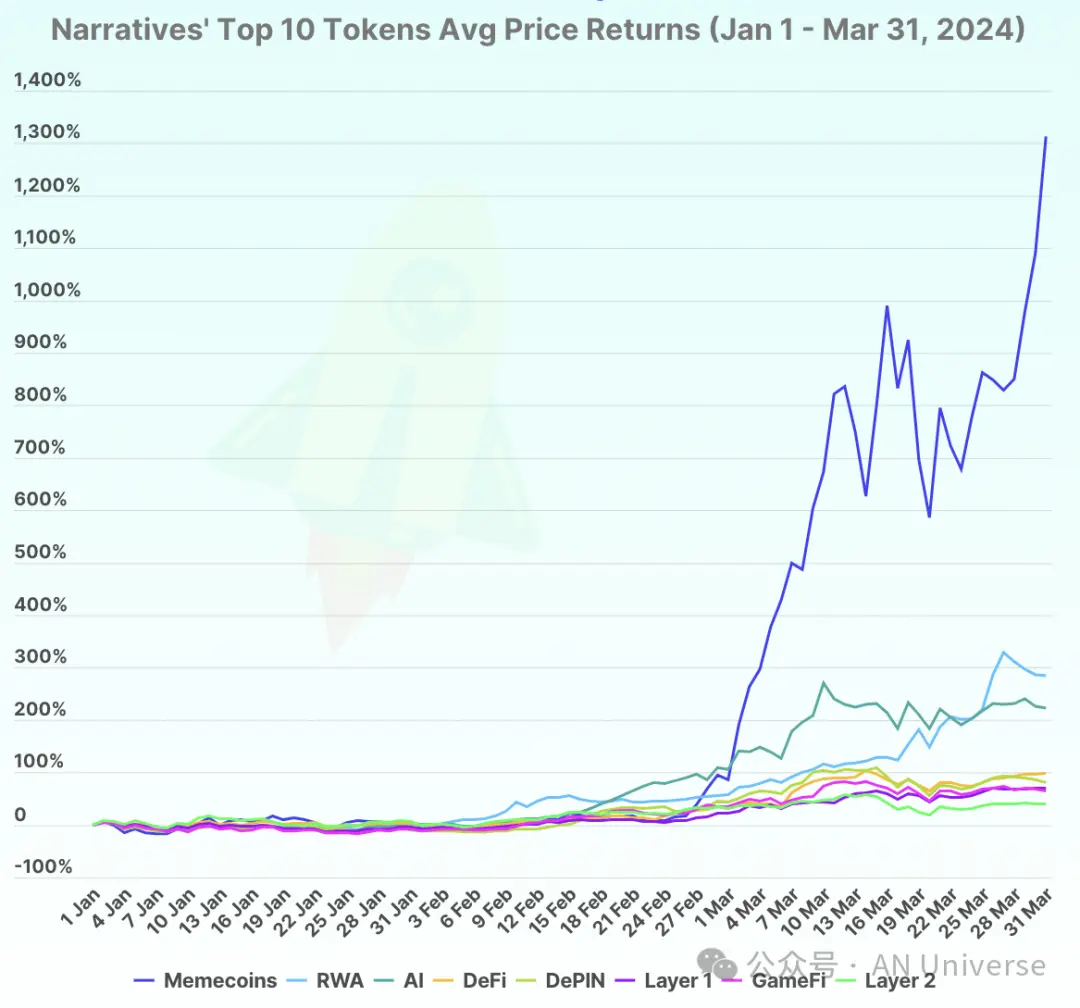
Memecoin creators leverage various themes to attract the attention and trading volume of crypto market speculators. In many cases, well-known KOLs and forums like Reddit have also joined the memecoin craze. Unlike other cryptocurrencies that primarily serve as digital currencies like Bitcoin (BTC) or Ethereum (ETH), developers often create memecoins as lighthearted social experiments, with limited technical value.
Many people find that memecoins are refreshingly different from the seriousness of traditional cryptocurrencies. Meme coins invite a new generation of users to engage with blockchain technology in an approachable and non-traditional way. However, some believe that meme coins are highly risky assets that could undermine the legitimacy of ambitious blockchain projects. Regardless of whether you dare to invest in memes, it is still important to understand how memecoins operate, where they are most commonly used, and some risks you should be aware of before entering this field. Today, we will discuss the relevant analysis of memes and cryptocurrencies.
05 The History of Memecoins
The concept of memecoins can be traced back to the early stages of cryptocurrency, where it did not initially trigger market enthusiasm until the emergence of the first representative memecoin, Dogecoin (DOGE), in 2013. Dogecoin was created as a joke by software engineers Billy Markus and Jackson Palmer. Its logo features the popular Shiba Inu "Doge" at the time. Despite its origins as a humorous attempt, Dogecoin's low price and fast block generation speed quickly made it popular in the crypto space.
Bitcoin is essentially the largest memecoin; its value comes from people's consensus, which is based on a belief in decentralization and relies on cryptographic technology to achieve it. Currently, we typically refer to cryptocurrencies that lack technological innovation and are driven purely by consensus, humor, and rapid dissemination effects as meme coins.
From online tipping on commonly used communities like Reddit.com to charitable donations to international non-profit organizations, Dogecoin has become a commonly used medium of exchange, not just a joke. With the success of Dogecoin, a series of memecoins inspired by internet trends and jokes have emerged: tokens like Pepe (PEPE) (inspired by the sad frog) and Shiba Inu (SHIB) have gained attention due to their own advantages and have become popular in the cryptocurrency community.
In subsequent developments, the rise of DeFi (decentralized finance) and the NFT (non-fungible token) craze have provided fertile ground for more memecoin experiments.
06 Memecoins and NFTs
Memecoins have also capitalized on the NFT craze, transforming viral internet characters into unique digital assets that users can own and trade. For example, a memecoin project might create limited edition NFTs featuring popular elements related to their tokens. Users can buy, sell, or trade these NFTs on various NFT marketplaces. This allows meme enthusiasts to not only preserve a fragment of internet history but also support their favorite meme projects. Rare Pepes and the subsequent Fake Rares series are examples of some of the earliest NFT projects developed from viral internet memes.
Shiba Inu Coin (SHIB), one of the most popular meme projects in the cryptocurrency space today, has also launched its own "Shiboshis" NFTs. This series includes 10,000 cartoon characters inspired by Shiba Inu, which holders can use to battle in Shiba Eternity—a popular gold-earning game within the SHIB project (earning coins through gameplay).
Like many other popular NFTs, meme NFT holders have established private communities for their collections, with some communities allowing holders to participate in exclusive offline events and have opportunities to receive related merchandise.
07 Memecoins and DeFi
DeFi refers to a range of blockchain-based financial applications that reconstruct traditional financial services in a decentralized manner. Memecoins utilize DeFi protocols to create innovative ways for users to engage with their tokens, not limited to simple speculative trading but also allowing participation in staking, mining, and providing liquidity.
Staking: Memecoin holders can stake their tokens on DeFi platforms to earn rewards. These rewards can be in the form of additional memecoins or other tokens, providing users with an incentive to hold and actively participate in the memecoin ecosystem.
The Shiba Inu Coin project is a typical example of how meme projects thrive by incorporating DeFi elements into their protocols. SHIB token holders can use the Shiba Swap platform to exchange ERC-20 tokens and perform various tasks to earn SHIB and two other native tokens, BONE and LEASH. Doggy DAO, as a decentralized autonomous organization (DAO), provides additional benefits by granting token holders voting rights on key protocol decisions.
Mining: Mining primarily involves lending your held memecoins to others in exchange for interest through smart contracts. The DeFi platforms of memecoins use these loans to facilitate various activities, including trading or providing liquidity, and users earn rewards for their contributions.
Providing Liquidity: Memecoins can also create liquidity pools, allowing users to provide their held memecoins for others to trade on decentralized exchanges. This process enables users to earn a portion of the trading fees while contributing to the liquidity and efficiency of the memecoin market, also earning corresponding compensation.
08 Risks of Investing in Memecoins
Due to the viral nature of memecoins, many projects have experienced significant surges, but some have also suffered sudden crashes.
1. Extreme Volatility: The value of a memecoin can skyrocket in an instant and plummet the next, making it easy for investors to incur significant financial losses. It has a strong speculative nature, making it particularly susceptible to sudden market changes influenced by a key figure (like Musk), news, or internet trends.
2. Over-Reliance on Emotion: Many new memecoins often lack fundamental technology or practical use cases, which may lead their value to depend entirely on market sentiment. While some memecoins have found creative ways to integrate NFTs, decentralized finance (DeFi), or community-driven initiatives, many projects primarily focus on humor and satire as their emotional value. This lack of fundamental technical value can easily turn memes into castles in the air.
3. Market Manipulation: The concept-driven nature of memecoins may attract bad actors looking to profit from hype. Sometimes, they deliberately create false market news and divide communities to inflate coin prices, then sell their holdings at the peak, often leading unsuspecting investors to face significant losses. These schemes exploit the speculative and emotional nature of memecoin trading, so investors need to conduct thorough research when heavily investing in memecoins.
4. Many Scams: Many memecoin projects are launched by anonymous or pseudonymous developers, making it difficult to assess the credibility and intentions behind the tokens. There are now many presale memes, where the development team runs away after receiving a certain amount of funds. There are also cases where official accounts are hijacked to modify presale payment addresses, posing significant risks.
09 Conclusion
Overall, memecoins represent an interesting fusion of digital currency, internet culture, and humor. As memecoins continue to attract attention and evolve, how they will shape the broader cryptocurrency landscape, how they will find astonishing applications beyond their humorous origins, and how to discover early value—when to enter to balance risk and reward—are all questions worth exploring. The AU Research team will continue to provide more tools and detailed technical insights.
【Disclaimer】The market is risky; investment requires caution. This article does not constitute investment advice, and users should consider whether any opinions, views, or conclusions in this article align with their specific circumstances. Investing based on this is at your own risk.





